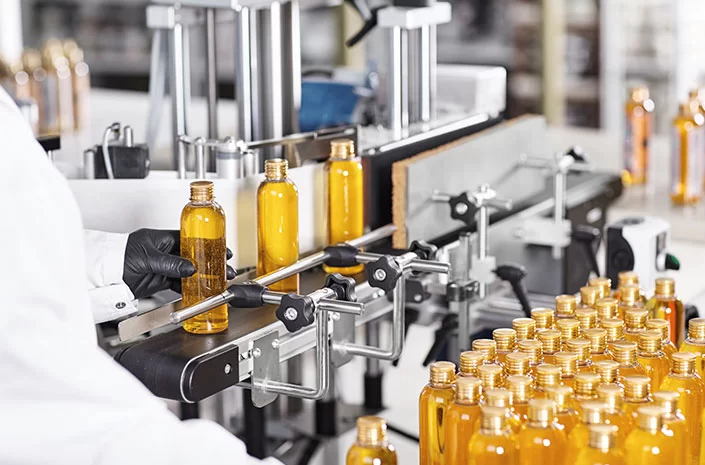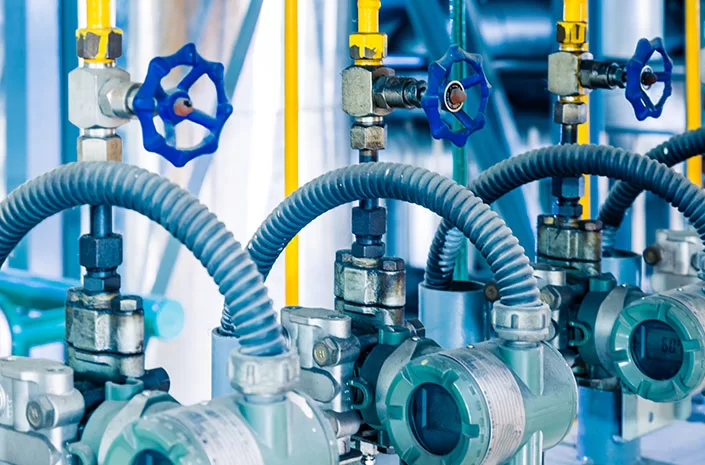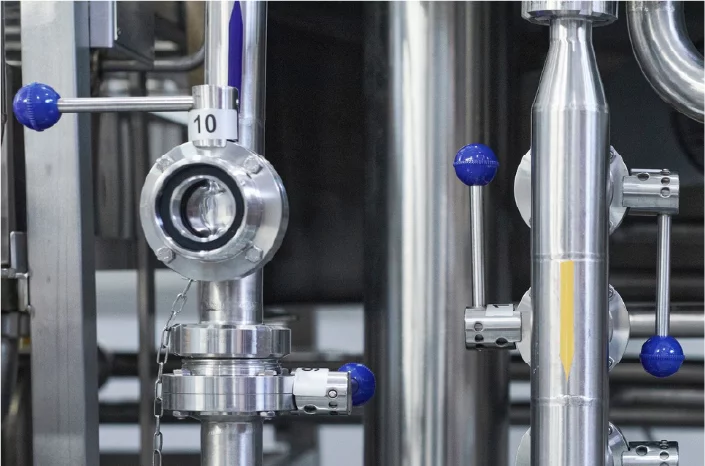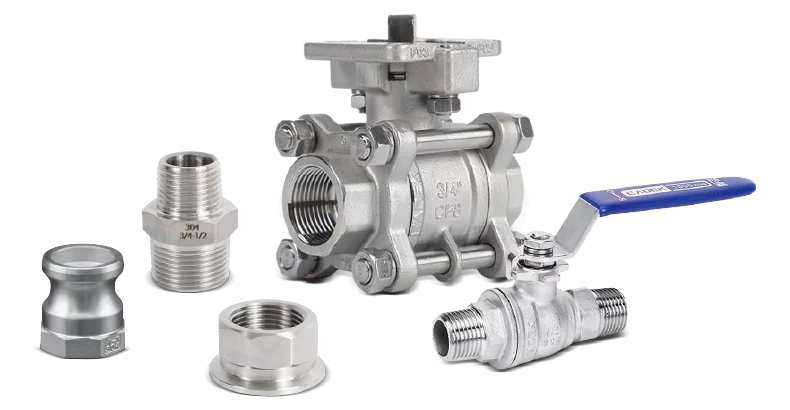


Carbon Steel
Material
1/4"- 2 1/2"
Size
BSPP/BSPT/NPT
Thread
Hydraulic & Pneumatic Valves
Ball Valve V-031
A ball valve is a high-performance valve that uses a spherical closure element to control the flow of medium in a pipeline through rotation. This quarter-turn ball valve features rapid opening and closing actions, easy operation, and low fluid resistance for industrial and commercial piping systems.
- Quick Opening and Closing
- Various Temperature Ranges
- Corrosion Resistance
- Quality Control System
- Accurate Testing Processes
Ball Valve V-031
A ball valve is a type of valve that uses a spherical plug with a circular opening as the closing element. By rotating the ball, the valve controls the flow of fluid. Its opening and closing action is achieved by rotating the ball 90° within the seat, enabling rapid operation with low flow resistance and excellent sealing performance. The ball valve has a working pressure range up to 1000 psi (PN63) and a temperature range between -20℃ to ~ 200℃ (for PTFE) and up to 400℃ (metal seats). Constructed from high-strength materials like stainless steel and carbon steel, and paired with sealing materials such as PTFE, it accommodates diverse media and operating conditions.
Due to its simple structure, ease of operation, and long service life, the ball valve is widely used in industrial and civil pipeline systems. It is not only suitable for liquids but also for gases, steam, and corrosive media. Ball valves are widely used in petrochemical, chemical processing, natural gas transmission, water treatment, pharmaceutical manufacturing, and other industries, where tight shutoff, long service life, and easy operation matter.

Features
Rapid Opening and Closing
The full-bore ball valve can be fully opened or closed by rotating 90°, making operation convenient and efficient, especially suitable for systems requiring frequent opening and closing or cycling applications.
Excellent Sealing Performance
The ball valve uses PTFE and high-quality sealing materials between the ball and seat, ensuring zero leakage even under high-pressure and high-temperature conditions. It is ideal as a sealed ball valve for critical services.
Low Fluid Resistance
The full-bore design allows fluid to flow almost unobstructed, reducing pressure loss and improving efficiency, making this valve a preferred choice for systems with high flow requirements.
Easy Maintenance
The compact design of the ball valve allows for easy disassembly and assembly. Some designs enable direct maintenance or replacement of seals within the pipeline, significantly reducing downtime.

Applications




The ball valve provides a tight shutoff for process lines, sampling ports, and utility manifolds. Its stainless steel construction and PTFE seats resist hydrocarbons and corrosive fluids.
Use the full-bore ball valve on supply, bypass, and isolation lines to minimize pressure drop. Reliable sealing prevents leaks that could interrupt treatment processes or contaminate water streams.
The valve works on skid piping, control lines, and small-bore manifolds where quick isolation is essential. Corrosion-resistant materials and robust seats withstand cyclic loads and saline environments.
Hygienic-compatible versions of the PTFE seat ball valve protect product quality in dosing, CIP, and transfer lines. Low internal volume and easy in-line servicing reduce downtime during sanitary maintenance.
Specs
Product Specifications
| Product Code | V-031 |
| Material We Can Do | Carbon Steel/Stainless Steel |
| Size Range | “1/4” – “2 1/2” |
| Thread Type | BSPP/BSPT/NPT |
| Temperature Range | 20°C – 120°C |
| Maximum Pressure | 200 psi |
Logistics and Certifications
| Certificate | ISO 9001:2015,IS014001:2015, CE, ROHS, KC, etc.. |
| Package | PVC bag for each piece.Cartons with pallet/out pallet/wooden boxes |
| Port | Ningbo/Shanghai, China Or other port on request. |
| Sample | Offer free samples and freight collected |
| Delivery Detail | According to the quantities and specifications of each orderA complete stock to provide fast deliveries for small orders.Normal delivery times is from 30 to 45 days after receiving the deposit |
| Generic Applications | Oil & Gas, Petrochemical, Natural Gas Distribution, Water Treatment, Steam Systems, HVAC, Pharmaceuticals, Marine, and Power Generation Industries. |
Support


Before installing the ball valve, isolate and fully depressurize the pipeline. Verify valve size, material, and thread standard (BSPP/BSPT/NPT) and match to system specifications. Ensure the pipeline is clean and free of debris; install an inlet strainer if needed. Align the valve so the handle orientation allows easy access and the flow direction matches the system design when applicable. Hand-start threaded connections to avoid cross-threading and use appropriate thread sealant or a light PTFE tape wrap. For flanged joints, use the correct gasket and tighten bolts in a star pattern to the specified torque. Support adjacent pipes to avoid body loads. Slowly pressurize and cycle the valve to seat the ball, then inspect for leaks and check torque after the first operation.
At Procamlock, we are committed to ensuring that every ball valve delivers consistent performance and long service life. We have an after-sales team to guide you on valve element replacement, best practices for full-bore ball valve care, and troubleshooting assistance for any technical concerns. We also provide access to genuine replacement parts to maintain the efficiency of your ball valve system. Whether you need quick maintenance tips or detailed servicing advice, our support team is dedicated to helping you keep your PTFE seat ball valve operating at its best long after purchase.
FAQs
Looking for answers about Ball Valves? Visit our FAQ section for detailed information and expert insights.
What is the difference between a ball valve and a gate valve?
Ball valves have fast opening and closing speeds and a compact structure; gate valves are suitable for prolonged full-open or full-closed use.
Can a ball valve be partially opened or closed to regulate flow?
We do not recommend keeping it partially open for extended periods, as this can easily cause wear on the sealing surfaces.
Can it be used in high-temperature steam systems?
Yes, our ball valves are made of high-quality stainless steel and are suitable for high-temperature steam systems. However, we recommend selecting high-temperature-resistant sealing materials such as PPL or metal.
Can ball valves be installed in any direction?
Yes, but it is recommended that the handle be oriented upward for ease of subsequent process operations.
Which is better, pneumatic ball valves or electric ball valves?
Pneumatic ball valves respond quickly and are suitable for applications requiring frequent operation; electric ball valves offer high control precision and are suitable for automated systems.
Related Products
Cast Iron/Stainless Steel/Aluminum Alloy
"1/2" - "3"

Get Your Camlock Coupling Today!
PROCAMLOCK offers durable, high-performance camlock fittings for easy use across industries like food processing, chemical, and construction.




